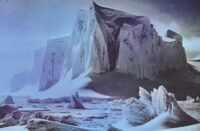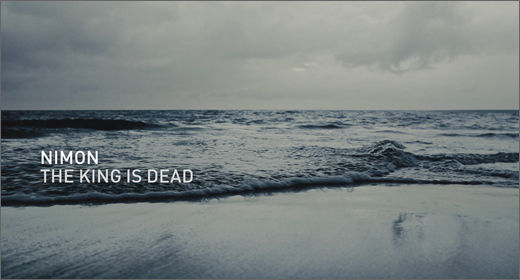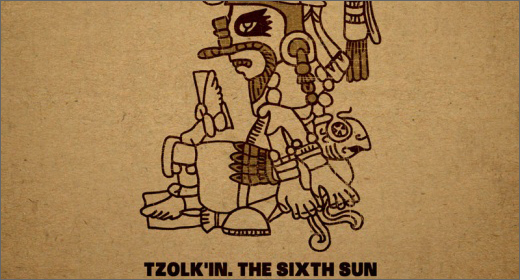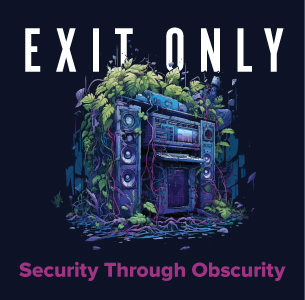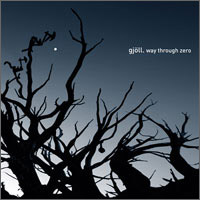
(05.26.06) Gjöll’s Way Through Zero is a revolutionary document — an
aural manifesto that seeks to focus man’s restlessness and emasculated
anger into a perceptive coup d’etat of the mind. Gjöll, the duo
of Jóhann Eiríksson and Sigurður Harðarson, have
built a conceptual record, setting the foundation in the noisy Norse
mythos where Gjöll is the river at the edge of the underworld.
It is the source of discontent which courses through the mind of man.
The five parts of Way Through Zero follow the course of rage
and disenchantment that flows through the hearts and minds of
dispossessed men, building from sporadic ambience to chaotic rage to a
climatic realization of internal power.
“Part 1” of the monologue begins with the mutterings of a lost soul, a
man cast adrift on the river that run through the abyss. Tones warp
and wave in the background and a piece of gutted machinery keeps
constant company with the lost traveler as he is drawn through an
empty landscape. “Part 2” erupts with a hollow-core symphony — wind
whistling through metal tubes and ducts — as a mechanized drummer
pounds the rhythm of our heartbeat. The voice becomes more strident
as adrenaline-fuelled discontent gives him voice. We are through
hiding in the sand, through turning the other cheek as we are beaten
daily by our oppressors. We are not cogs or numbers or identity-less
nodes on a vast network. We are voices, we are spirits with our own
light. We feel, we react. We fight back.
“Each and every one / of your institutions / is the length of my
shadow / and each shadow corrosive / teaching me hate / on sunny
days.” A moaning howl of noise cascades through “Part 3,” the
volcanic eruption of fury and resentment. Too long has the discontent
been held captive by the institution, by his oppressors. Spikes of
noise erupt through the waves of sound, a coruscating energy of
destructive fury. “If there is a hell / you have created it.” While
not a full-bore Winterkäalte assault, “Part 3” finds its pitch in
claustrophobic fury. This is the man broken, vitriol spilling out of
his cracked frame.
But Gjöll’s journey isn’t a “burn it all down” anarchistic
screed; rather, it is an examination of the mental breakthrough that
occurs at this point of self-immolation. In the vacuum following
“Part 3,” tiny sine wave tones sing with a whispered voice in a
questioning duet. Who gave the oppressors their power, their
strength? “There is no power / unless you recognize it / no threat /
unless you admit it / no peace / but the one you create.” And, with
such realization, the wave returns for “Part 5,” but it a course of
energy that is focused and directed. It is the movement of
self-actualized power and lacks the frantic energy underlying it in
“Part 3.” Finally, the wave is subsumed beneath an ambient field of
twinkling notes, the infinite canopy of stars that are available to us
when we throw off the self-made yokes of our oppression.
“I am an oasis / in the desert / that is myself.” Way Through
Zero is a self-help tape, really. A cleansing journey from
hopelessness and helplessness to the vast freedom of internalized
godhead. We leave the abyss behind us when we break through the final
veil. We see only the stars when we are free and we hear only their
song. Break on through to the other side, my friends. Let Gjöll
lead you there.
Way Through Zero is out now on Ant-Zen.






